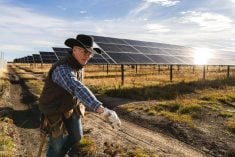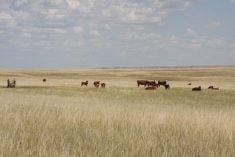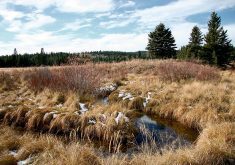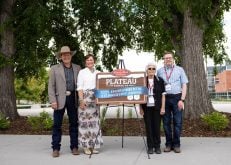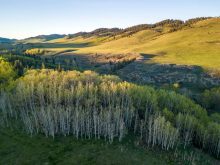Years of researching how to get the most out of the pastures on his southern Ontario beef farm left Cory Van Groningen frustrated.
“One book says only take the top sward and leave the rest to regrow; another book says use high-intensity grazing and trample it down; another book says take a third of the pasture,” said Van Groningen, adding the different theories are often “not compatible with each other.”
That frustration eased when he discovered Ecological Outcome Verification (EOV).
Developed by Zimbabwean grassland farmer Allan Savory and promoted by his international organization the Savory Institute, the system is used to identify and monitor parameters in order to make a farm more ecologically sustainable.
Read Also

Moo translator and methane measures: There’s an app for that
Dalhousie University researchers use artificial intelligence to create new dairy farm apps that analyze cattle sounds and measure methane.
The parameters all are visible and quantifiable, and allow for regional variation, said Van Groningen.
“(It) provided a deeper understanding of what it is we’re doing on a day-to-day basis, which really boils down to capturing sunlight so it can be converted into food for people to eat,” said Van Groningen, who completed the training this year and became a “hub verifier” for Eastern Canada.
Joining him for the training sessions was Manitoba producer Dana Penrice, making them the first two Canadians accredited for that role.
At a recent workshop, Van Groningen described Ecological Outcome Verification as a “feedback loop” of planning, monitoring and replanning (if necessary) to achieve the desired results. He and Penrice both want to build awareness in Canada about the program and train interested farmers to monitor the short-term parameters identified by the program. These include live canopy abundance, living organisms, desirable/undesirable species, plant litter, litter incorporation, manure decomposition, bare soil and soil capping, wind and water erosion, and forage quantity and quality.

Participating farms will receive annual visits from verifiers to assist in short-term monitoring and assessments every five years to assess long-term ecological improvements. (These include bare ground and litter cover, canopy cover percentage, water infiltration, soil carbon, soil equivalent fixed mass, soil biology and organic matter, and species richness.)
“All the (short-term) indicators have been shown by science to have a continuing effect on the long-term parameters,” Van Groningen said.
In an online information session last winter, Penrice used her farm as an example, showing a Google map of a 755-acre site and locations of 22 short-term monitoring sites and three long-term ones. (The hour-long webinar was recorded and can be found at www.holisticmanagement.ca by clicking on the EOV tab. It has details and photos of various parameters used in the program.)
“Basically what we do is put a short-term monitoring site in each of the paddocks,” Penrice says in the video.
Van Groningen said he likes the program because it “distributes the workload” of monitoring and verification by training the farmer to do some of the work. The verification visits and payment schedules can also be altered by the regional hub co-ordinator if necessary.
However, cost could be a deterrent for some. A training program delivered by Van Groningen and Penrice earlier this year cost $395 per person, with about 25 participants.
Among the program’s certified educators in Canada is Kelly Sidoryk, who ranches near Lloydminster. (Eight of 12 educators are in the Prairies and their bios can be found on Holistic Management Canada’s website.)
The Savory Institute is developing a “Land to Market Verified” label to promote food produced on farms using the method, but that is in its infancy. Until that happens, a price premium is not on the horizon, especially in Canada.
But Van Groningen argues a premium shouldn’t be necessary. While the program “does check the box for a lot of consumers,” the financial benefit to the farmer comes from ecological improvements, he said. As more sunlight is captured and converted to food on the same land base, the farmer can gradually boost production without added costs.
Another drawback to the system is that it’s designed for pasture-based systems only, although Van Groningen said he believes it can be applied to cropping systems.




